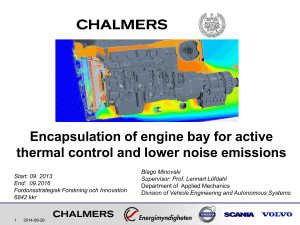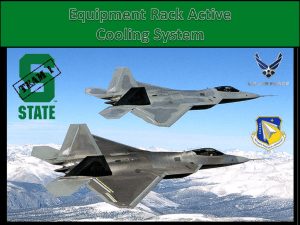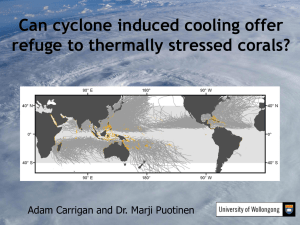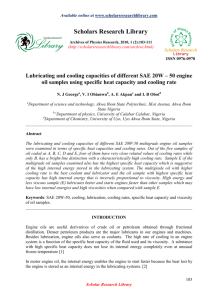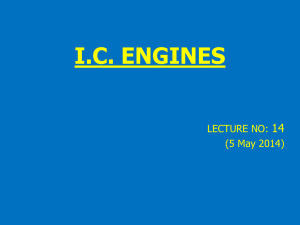Main Engine Cooling System
advertisement
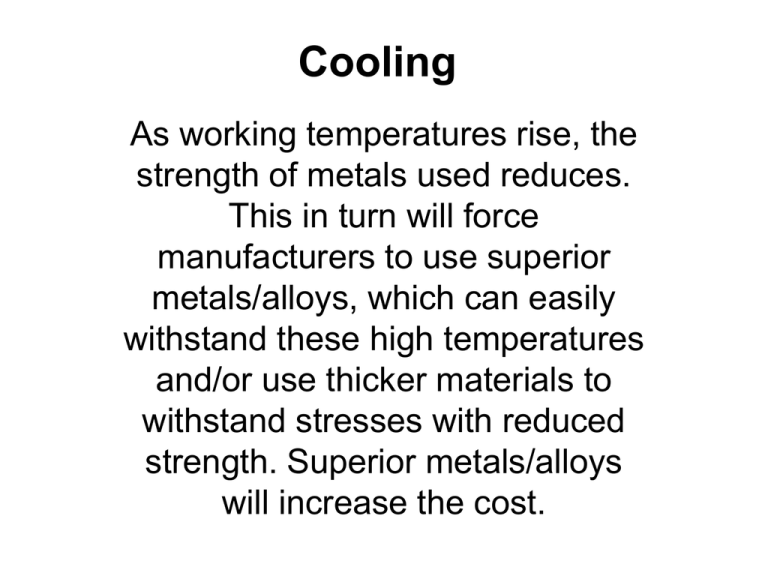
Cooling As working temperatures rise, the strength of metals used reduces. This in turn will force manufacturers to use superior metals/alloys, which can easily withstand these high temperatures and/or use thicker materials to withstand stresses with reduced strength. Superior metals/alloys will increase the cost. Thicker materials will increase weight and cost of engines and will also increase thermal stresses, which may result in failures of working parts. Hence, cooling of heated parts of the diesel engine is arranged, so that the strength of materials can be kept within safe limits and manufacturing of engine is economical and hence competitive and affordable. Although there is abundance of sea water available at sea, marine diesel engines do not use sea water directly for cooling the hottest parts of engine. This will result in corrosion of cooling water spaces and also deposit of salts on the cooling surfaces, which will result in interfering with heat flow, as salts have insulating properties. Instead the water circulated around the engine is fresh water (better still distilled water) and this fresh water in turn is cooled by sea water. This fresh water is treated chemically to keep slightly alkaline (to reduce corrosion) and prevent scale deposits. If distilled water (most of the ships generate distilled water from sea water for use on board ship) is used than risk of scale deposits is reduced. The cooling water pump - may be engine driven or be a separate electrical driven pump – pushes the cooling water around cylinder liners, cylinder heads, exhaust valves, turbochargers, etc and removes the heat. The heated fresh water is then cooled by sea water in a heat exchanger and than returns back to cool the engine again. Thus the cooling fresh water is in a closed circuit. The temperature of cooling fresh water is closely controlled by a three way valve control valve. If the cooling water temperature falls down then • it may cause thermal stress, which may lead to component failure • lead to decrease in thermal efficiency of engine by reducing temperatures of gases in the cylinder • if temperatures go below dew point of sulphuric acids, then sulphuric acids and water vapours in the product of combustion will go beyond the neutralization effect of alkaline cylinder oil and lead to corrosion (clover leafing) of the liners. • will result in difficulty in initial starting of diesel engine. If the cooling water temperature rises then • it will not remove the heat effectively, thus leading to excessive wear down • it will lead to higher scale formation For this reason, the cooling water temperature is maintained between 78 to 82 degree C. (on board ships, follow the temperature specified by the manufacturers operating manual – normally referred to as manual). Because the temperature of this cooling water is much higher than the cooling water used for other purposes (known as low temperature cooling – LT cooling), the water for cooling diesel engine is known as HT (high temperature) cooling water. • To make up for leaks from the system, there is a header tank (also known as expansion tank). Vents from the system are also led to this header tank to allow for expansion and also to get rid of trapped air. Header tank is placed high in the engine room and may be manually replenished and fitted with low water level alarm, so as to know major leaks immediately. Header tank level is checked once at least during watch keeping and level topped if required. The system also contains a heater, which is to keep the water hot when engine is not working and to raise the water temperature to required level before starting of engine. Some of the ships have a common fresh water cooling system which cools main engine as well as generator engines. This has an advantage whereby engines which are stopped, are kept warm and ready for starting by engines which are working. A fresh water generator is also included in the system. The system may also have a drain tank incorporated to retain the chemically treated for reuse after the engine is drained of fresh water for maintenance purpose. A single medium speed diesel engine with engine driven main pump and electrically driven auxiliary pump and heater for keeping engine warm when engine stopped. Engine circulation system with only HT cooler Two HT cooling pump Steam heater to keep the system hot when ship in port. Water is pumped through a heater using a small pump. Fresh water generator using heat from Diesel engine. It operates under vacuum. Temperature is controlled by a 3-way automatically Air is removed in a Dearation vessel. To make up any leak there is a header tank. Vents also are led here to allow for expansion. LT cooler. Sea water cools fresh water in a plate type of cooler
